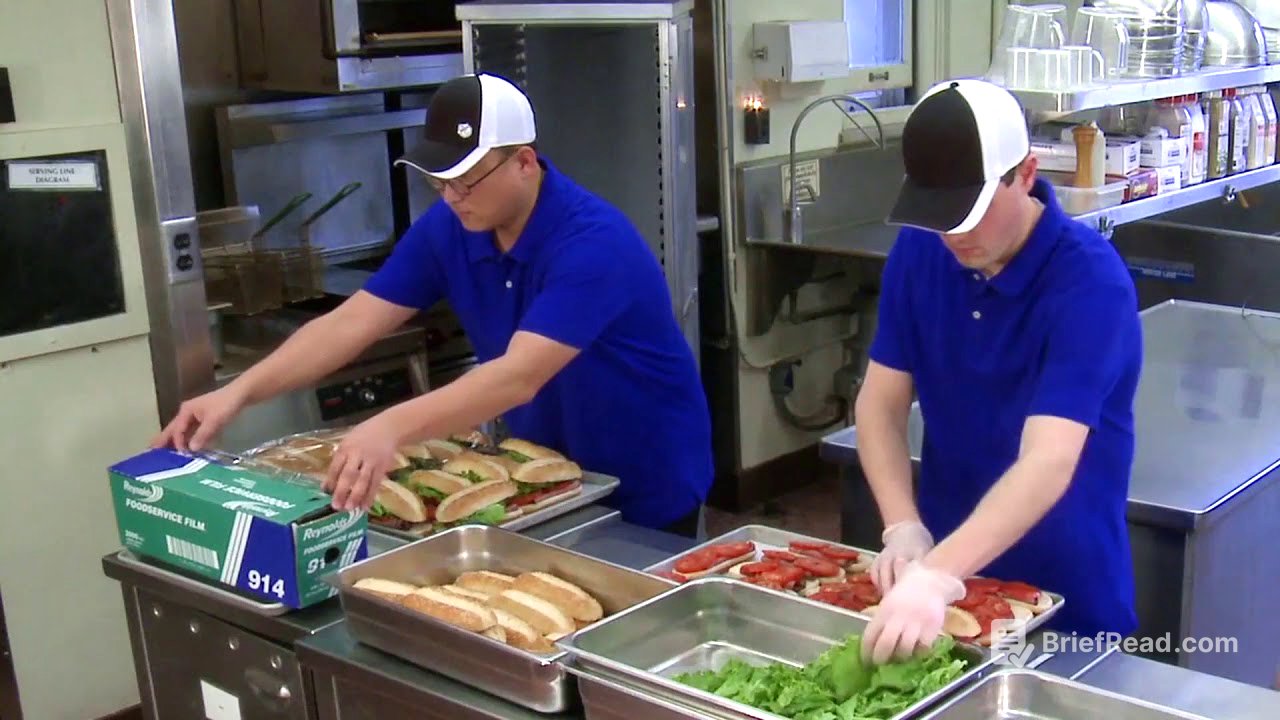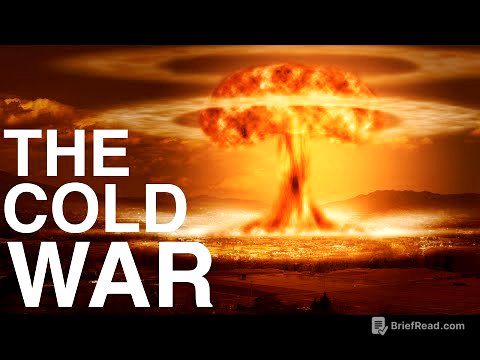TLDR;
This video emphasizes the importance of food safety in food service operations, focusing on temperature control throughout the entire food flow process. It highlights the necessity of standard operating procedures (SOPs) and employee training to maintain food quality and prevent foodborne illnesses. The video covers key areas such as receiving, storing, preparing, cooking, holding, serving, cooling, and reheating food, stressing the significance of accurate temperature monitoring and documentation at each stage.
- Importance of temperature control to ensure food safety and quality.
- Proper use and calibration of thermometers.
- Critical control points in food handling, such as cooking and cooling.
- Documentation of temperatures to verify adherence to safety standards.
Introduction to Food Safety and Temperature Control [0:02]
Food safety is essential throughout the entire food handling process, from receiving to serving, including storage, preparation, cooking, holding, cooling, and reheating. Maintaining proper temperatures is crucial for serving hot food hot and cold food cold, which is a key aspect of food quality. Managers must implement standard operating procedures (SOPs) to guide employees in maintaining food safety and quality, and employees need to adhere to these guidelines.
Importance of Standard Operating Procedures [0:34]
Standard operating procedures (SOPs) should include monitoring time and temperature at each stage of food flow: receiving, storing, preparing, cooking, holding, serving, and cooling. Regularly checking food and storage unit temperatures should be a routine task for employees. Various types of temperature measuring devices can be used, but it's important to ensure the thermometer is accurate. Regular calibration of thermometers should be part of the work schedule to maintain accuracy.
Types of Thermometers and Their Uses [1:06]
A calibrated bimetallic stem thermometer, costing around $10, is generally accurate within 2 degrees Fahrenheit, but it takes about 15 seconds to get a true reading due to its larger sensing area. Digital thermometers, also around $10, provide quicker readings because they are tip-sensitive, but they cannot be calibrated and are easily damaged. Digital thermometers should still be checked regularly for accuracy. When checking temperatures of hot foods in deep cooking equipment, using a slotted spoon to hold the thermometer protects employees and ensures an accurate reading.
Avoiding Cross-Contamination and Ensuring Accurate Readings [2:09]
Infrared thermometers do not touch the food, eliminating the risk of cross-contamination, but they only measure surface temperature, making them best used as a screening tool. For thin foods like meat patties or fish fillets, the Food Code requires a tip-sensitive thermometer with a suitable probe diameter to check endpoint cooking temperatures, which start at about $15. To get an accurate reading with any insertion-type thermometer, the sensing area must be correctly positioned in the center of the thickest part of the food. The Food Code advises taking temperature readings from at least two places in food items to ensure thorough cooking.
Preventing Cross-Contamination and Documenting Temperatures [3:09]
Cross-contamination can be prevented by cleaning and sanitizing thermometers between uses, either with an alcohol wipe or a designated sanitizer. Checking and recording temperatures as food moves through the operation ensures that food does not stay in the temperature danger zone (41 to 135 degrees Fahrenheit) for too long and provides documentation that standards are being met. Perishable food should be checked upon receipt to ensure it is not in the temperature danger zone; if it is, it should be rejected.
Proper Food Storage Temperatures [4:04]
Temperatures of all storage areas should be checked and recorded twice daily, verifying proper storage temperatures with both external gauges and internal thermometers. There are three types of storage: frozen (at or below 0 degrees Fahrenheit), refrigerated (between 32 and 41 degrees Fahrenheit), and dry (between 50 and 70 degrees Fahrenheit).
Safe Thawing Practices [4:37]
Improper thawing of temperature-controlled for safety (TCS) foods is a major cause of foodborne illness. Thawing foods under refrigeration is the best practice. Plan ahead by checking production schedules to avoid temperature abuse. Foods can also be thawed as part of the cooking process.
Safe Food Preparation Techniques [5:00]
When preparing food, take out small amounts of ingredients from refrigerated or frozen storage as needed to prevent them from staying at room temperature in the temperature danger zone for too long. For example, when making cold meat sandwiches, only pull out batches of meat, lettuce, and tomatoes, and keep these foods cold during preparation by resting them on ice. Batch preparation or batch cooking helps avoid temperature abuse and improves product quality.
Endpoint Cooking Temperatures and Critical Control Points [5:37]
Proper endpoint cooking temperatures vary depending on the food. Fish should be cooked to an internal temperature of 145 degrees Fahrenheit, ground beef and ground pork to 155 degrees Fahrenheit, and poultry to 165 degrees Fahrenheit. Standardized recipes often include the endpoint cooking temperature. Cooking is a critical control point (CCP), representing the last chance to minimize foodborne illness risks. Reminders about minimum cooking temperatures should be posted in the cooking area.
Holding Times and Off-Site Transport [6:27]
Holding times for menu items (the time between production and service) vary depending on the production system and number of people served; minimizing holding time improves product quality and reduces the risk of temperature abuse. For operations that transport meals off-site or offer to-go foods, the temperatures of food and time taken should be noted upon delivery or before the food leaves the kitchen.
Maintaining Hot and Cold Food Temperatures [6:58]
Hot foods should be held at or above 135 degrees Fahrenheit, and cold foods at or below 41 degrees Fahrenheit. Organizations may specify more rigorous temperatures in their SOPs. Maintaining cold food temperatures below 41 degrees Fahrenheit can be challenging, especially if small portions are removed too early from refrigerated storage. Cold foods should be held in refrigerated storage until service and then kept cold with refrigerated display cases, service wells, ice baths, or ice sheets. Serving temperatures should be checked and recorded, and action should be taken if needed.
Proper Cooling Techniques [8:25]
Proper cooling of foods is critical to food safety, as improper cooling is a major factor in foodborne illness outbreaks. Hot foods must be cooled quickly to prevent bacterial growth. Foods should cool from above 135 degrees Fahrenheit to 70 degrees Fahrenheit within two hours, and then from 70 degrees Fahrenheit to under 41 degrees Fahrenheit in an additional four hours. To speed up cooling, use chill sticks, portion into small quantities, use ice baths, or use a blast chiller. Temperatures of foods should be taken during the cooling process to document compliance with standards.
Reheating and Final Thoughts on Food Safety [9:49]
When reheating temperature-controlled for safety foods, a minimum temperature of 165 degrees Fahrenheit should be reached. A food service's reputation depends on serving quality food safely. Monitoring temperatures and controlling the time perishable foods spend in the temperature danger zone are critical for protecting that reputation. Food service team members must be alert to temperature and time requirements and take all possible preventive actions to ensure proper food handling. Recording temperatures at each step of the food flow provides documentation that there was no time or temperature abuse.









